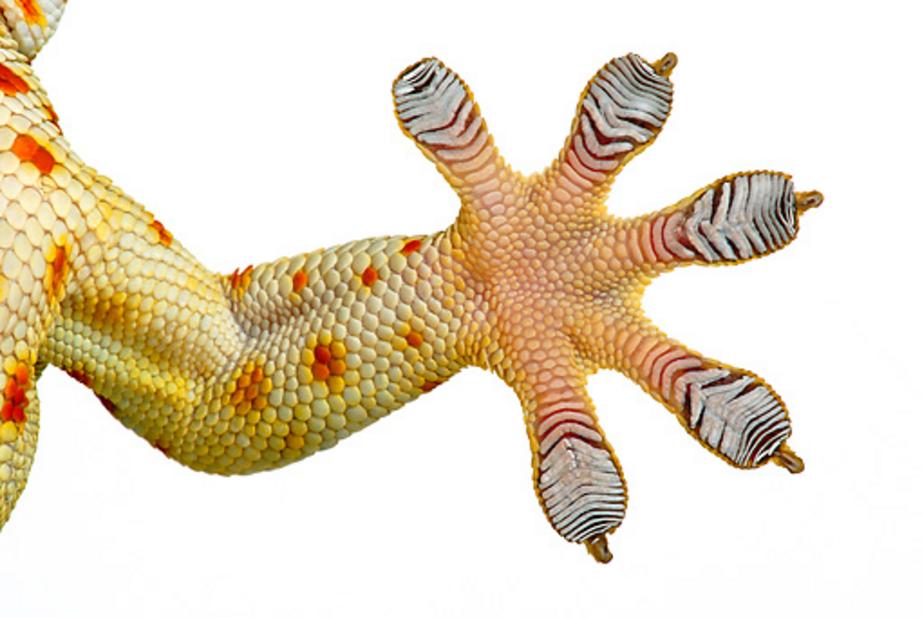Gecko-inspired robot has grippers that could clean up space junk
In space, grabbing onto things is hard. A new robot that uses grippers inspired by gecko feet could solve that problem, helping clear up the mess of debris that orbits Earth.
The toaster-sized device can grip, hold onto and move around even large, smooth surfaces in microgravity, on both flat and curved objects. To do this, it uses a “dry adhesive” material created by Hao Jiang at Stanford University in California and his colleagues.
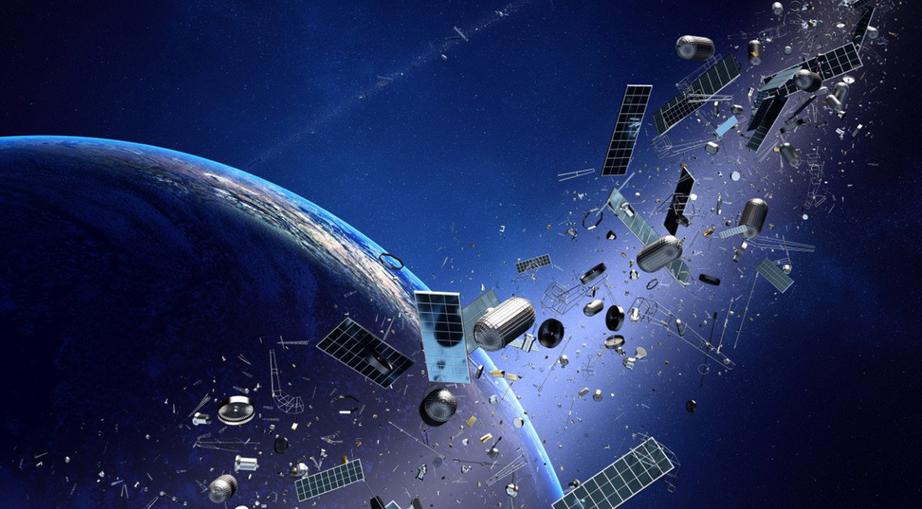
“This ability to grab onto an object nearly anywhere, instead of needing a specific grapple point that may not even be there, is really advantageous,” says Matthew Spenko at the Illinois Institute of Technology in Chicago. “It means you don’t need a precision approach.”
In an environment where an accidental nudge can send something flying and space debris can be travelling faster than the speed of sound, agility is key.
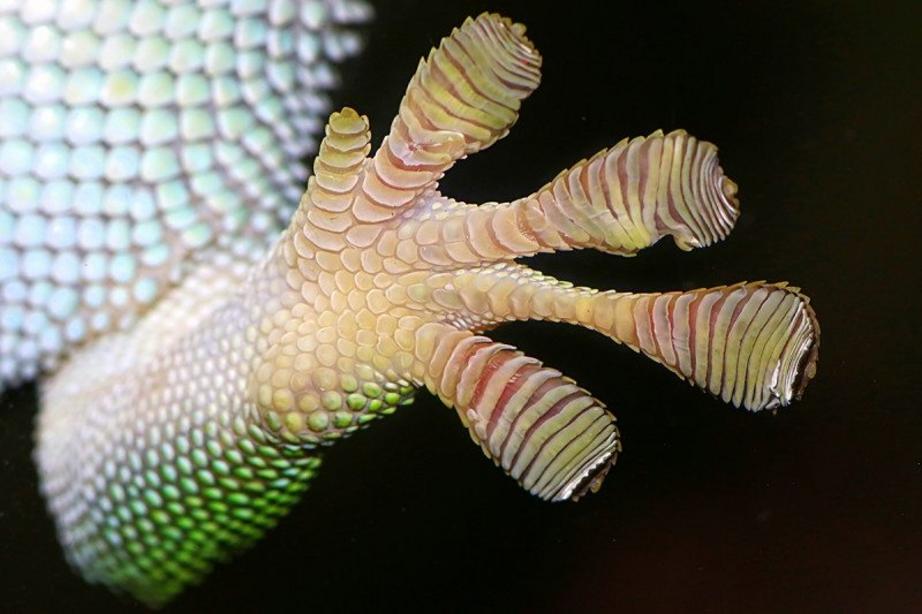 Litter picker for the space age
Litter picker for the space age
Get a grip
Geckos can hold onto almost any smooth surface with just a few toes, which are covered in tiny rubbery hairs. The ends of those hairs split off into such small strands that they interact with the molecules of any surface the gecko is climbing. This produces a Velcro-type effect that acts as an adhesive only when the gecko’s toes are pulling along a surface and bending – an action that increases the area of the touching hairs.
The researchers mimicked this trait for their gripper, which features a thin sheet covered in protruding wedges one-tenth of a millimetre wide. These micro-wedges stick to a smooth surface when they bend as they are pulled across it. Single sheets of this type of material have been used before to create tiny robots that can climb smooth walls while dragging heavy loads.
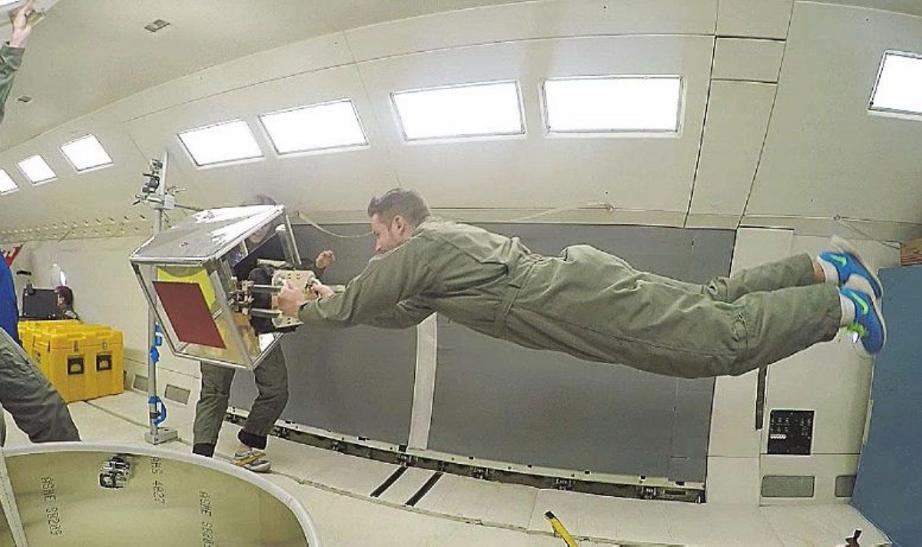 The robotic gripper grabbing a cube on a parabolic flight. Image: Jiang et al., Sci. Robot. 2, eaan4545 (2017)
The robotic gripper grabbing a cube on a parabolic flight. Image: Jiang et al., Sci. Robot. 2, eaan4545 (2017)
Jiang and his colleagues used two wedge-covered sheets with a robotic pulley that pulled the sheets together once they touched an object. This made the system stronger than the single-sheet version by locking the object between two sets of wedges. Attached to a robotic arm, the device could gently grab and secure even large pieces of debris.
Remains of decay
Space junk in Earth’s orbit is a growing problem. Bits and pieces of dead satellites, spacecraft and other discarded or broken-down equipment whizz around our planet, all potentially hazardous to working satellites and the International Space Station.
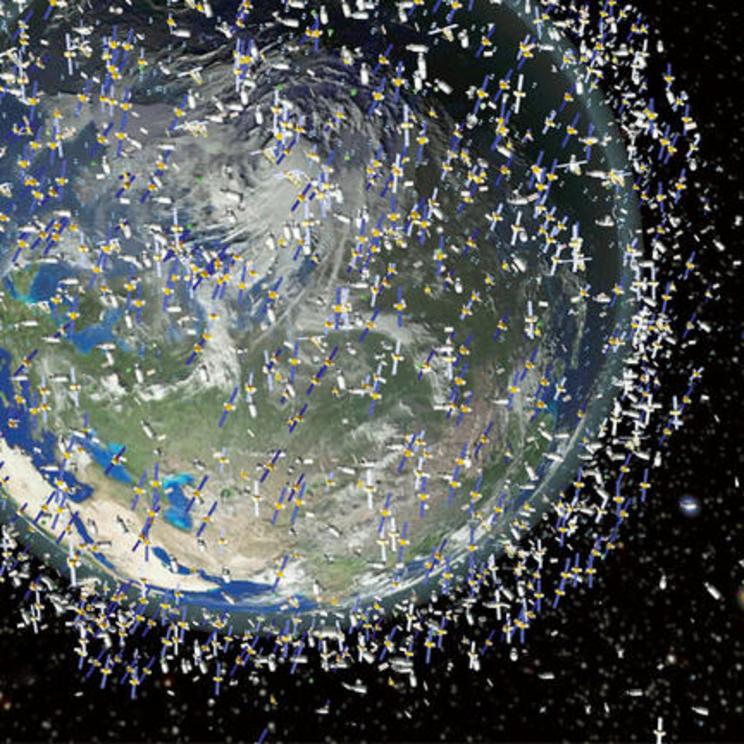
Of the hundreds of thousands of pieces of debris, more than 20,000 are larger than 10 centimetres across – big enough to smash a piece off a satellite and create even more orbiting junk.
Ideas proposed for collecting the junk include sweeping it up with a giant magnetic net or vaporising it with laser beams, but none have yet worked out – and for now, nobody is picking up the trash.
That’s where a new robot comes in. The harsh environment of space makes the methods we use to grab things on Earth ineffective. A suction-based system can’t be used, because there’s no air for it to suck up. Robotic arms with grasping “fingers” only work if there’s something to grab onto, but many pieces of debris have smooth, flat sides.
Normal adhesives stop being sticky in the cold vacuum, and even sticking down a piece of tape requires enough force to make the object you’re adhering it to float away. More sophisticated schemes are often too big and heavy to launch into orbit.
Garbage grabber
The researchers tested their gecko-inspired grabber in the temporary weightlessness of a parabolic aeroplane flight, and using pressurised air at NASA’s Jet Propulsion Laboratory (JPL). They even sent a pared-down version for astronauts to try out on the International Space Station.
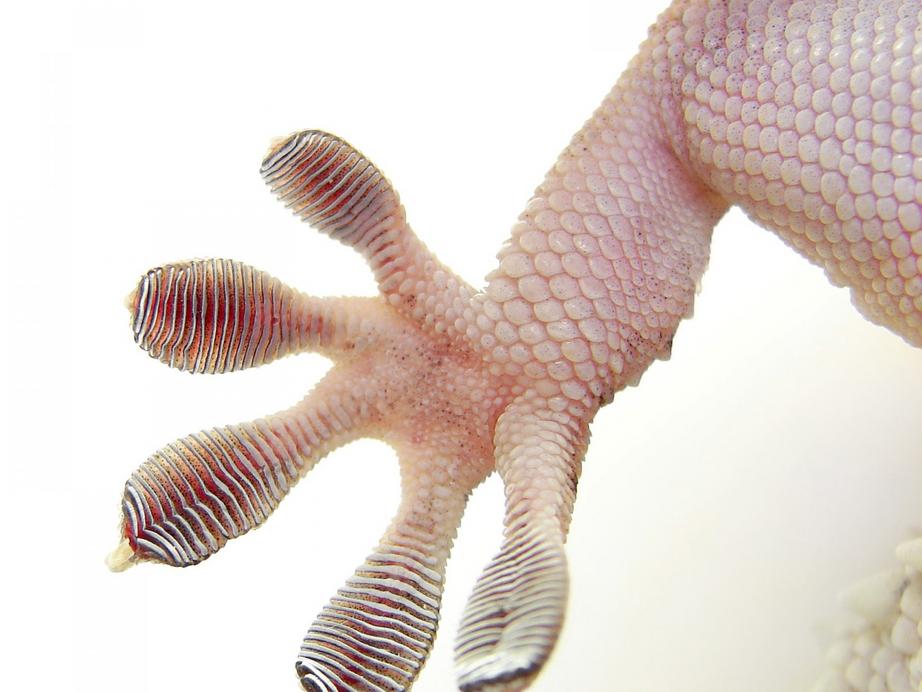
On the aeroplane, the device was able to grasp and move around cube, cylinder, and sphere-shaped objects and then gently release them without affecting their motion. At the JPL, it autonomously attached to drifting objects more than 100 times its size and mass. On the space station, it held on to a wall for weeks at a time.
“It’s hard to get all those little gecko pads in contact with the surface and evenly distribute the load, especially if it’s going to work with both flat and curved objects,” says Spenko. “What’s really impressive in this work is that they scale it up and show that it works in a larger size.”
The gripper may be put to use collecting pieces of drifting space debris for disposal, but it could also be used on a robot that can climb on the outside of spacecraft, or to help with autonomous docking between spacecraft.
Journal reference: Science Robotics, DOI: 10.1126/scirobotics.aan4545

